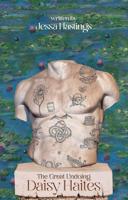Publisher's Synopsis
Excerpt from Louisville College of Dentistry Announcement, 1904: Dental Department of the Central University of Kentucky; Regular Session Begins in October and Continues Thirty Weeks
The new building is passed on both sides by electric car lines, which, With their systems of transfers, reach to every part of the city, and thus make the daily clinic available to all those desirous of dental service.
Louisville has over inhabitants, and With the neighboring cities across the Ohio River, together with the numerous charitable institutions and large, manufactories located in the city, there is no lack of material for clinics. This College has been famed for years for the excellence of the clinic. Frequently during the past term more patients presented than could possibly receive service.
The dental student will be admitted to the surgical clinics at the Gray Street Infirmary (which is a part of the equip ment of the Louisville College of Dentistry), City Hospital, which is three squares distant and Where many very impor tant clinics are held, and such other clinics as he may desire to attend or consider would be instructive for him to witness, thus giving exceptional opportunities for oral surgical work.
Louisville is pleasantly located on the south bank of the Ohio River. The climate is temperate, and the winters are mild and open.
It is a great educational center, and offers advantages in libraries, museums, and pleasant surroundings.
About the Publisher
Forgotten Books publishes hundreds of thousands of rare and classic books. Find more at www.forgottenbooks.com
This book is a reproduction of an important historical work. Forgotten Books uses state-of-the-art technology to digitally reconstruct the work, preserving the original format whilst repairing imperfections present in the aged copy. In rare cases, an imperfection in the original, such as a blemish or missing page, may be replicated in our edition. We do, however, repair the vast majority of imperfections successfully; any imperfections that remain are intentionally left to preserve the state of such historical works.























